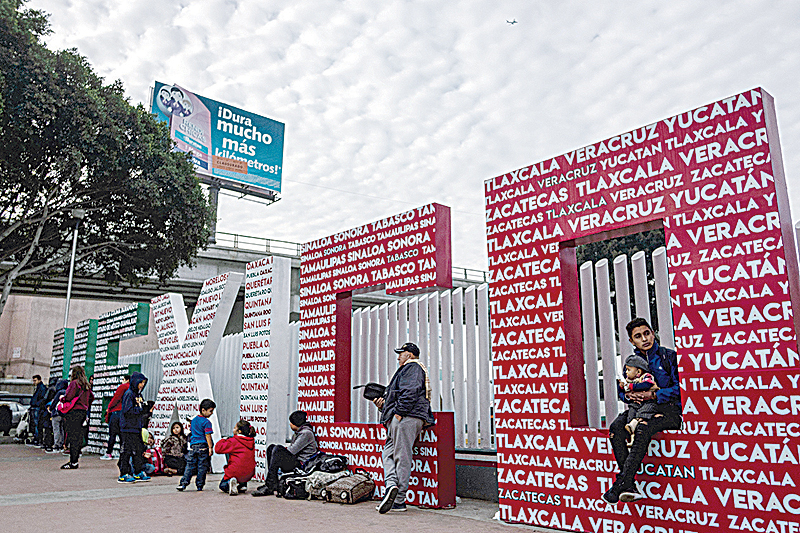Critics say the policy is xenophobic and could put refugees at risk
TIJUANA: The United States began sending migrants who have applied for asylum back to Mexico on Tuesday to await their court dates under a controversial new policy from President Donald Trump. Carlos Gomez of Honduras, who arrived at the border in a caravan of thousands of Central American migrants last year, was the first to be sent back, Mexican authorities said.

Mexican immigration officials ushered Gomez, 55, who was carrying a blue backpack, into a waiting van and took him to an undisclosed migrant shelter in Tijuana, across the border from San Diego, California. The US embassy in Mexico City confirmed in a statement that Washington had begun implementing the new policy, Trump's latest bid to curb illegal immigration. Critics say the policy is xenophobic and could put vulnerable refugees at risk.
"The United States has begun implementing the Migrant Protection Protocols," the embassy said, using the US Department of Homeland Security's name for the plan -- which the administration initially called the "Remain in Mexico" policy. "This action is a response to the illegal migration crisis the United States is facing on its southern border."
It said asylum claims in the US had increased by 2,000 percent in the past five years, "since many migrants know that applying for asylum gives them an opportunity to remain in the United States, even if they do not have a valid asylum claim." The policy will not apply to Mexicans seeking asylum, the US says. Under international law, asylum applicants cannot be sent back to the country they are fleeing.
'Catch and release'
Announced last year, the policy aims to curb what Trump calls "catch and release" -- allowing migrants who cross the border without papers and claim asylum to remain in the United States while their cases are processed. The Homeland Security Department says the change is needed because of a "humanitarian and security crisis" on the US southern border, caused by a broken immigration system "exploited by smugglers, traffickers, and those who have no legal right to remain in the United States."
The US says 90 percent of asylum claims are ultimately rejected as invalid by a judge. Most come from migrants fleeing poverty and gang violence in Central America's "Northern Triangle": Honduras, Guatemala and El Salvador. Many asylum applicants never show up for their court hearings, officials say. The system is badly backlogged, with 800,000 asylum requests currently pending. The process can take months or even years.
'Horribly bad idea'
But the new policy has been sharply criticized by opponents on both sides of the border. Migrants have been tortured, raped and killed in Mexico's often violent border regions, and the new policy violates the right of people whose lives are genuinely at risk to seek asylum in the US, activists say. "It's a horribly bad idea to implement this plan," said Melissa Crow of the Southern Poverty Law Center in the US, an advocacy group that has challenged Trump administration immigration policies in court.
"It's not safe for many, if not most, of these asylum seekers to wait in Mexico. Lots of them are fleeing cartel violence and domestic abusers," she told AFP. "There are examples of people being pursued by their persecutors while waiting in Mexico." Mexico has said it "disagrees" with the policy, but will grant the migrants temporary visas for humanitarian reasons pending resolution of their asylum cases.
"The United States has decided unilaterally to ask them to wait in Mexico while their asylum claims are processed," said Rodulfo Figueroa, head of Mexico's immigration office in Tijuana. "We are also taking a unilateral decision to receive them. They are unilateral, sovereign decisions by both countries." He said the number of migrants sent back daily would depend on the United States. Mexican authorities have said the US plans to continue presenting 20 people a day at the Tijuana crossing, and eventually extend the policy to other points along the 3,145-kilometer border. - AFP

